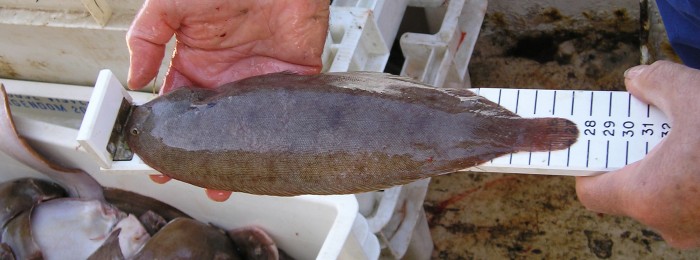01843 585310
info@kentandessex-ifca.gov.uk

01843 585310
info@kentandessex-ifca.gov.uk

Solea solea Common on sandy and muddy ground with adults usually being found in depths of 10-100m, and younger specimens being found in 1-2m depths. Sole feeds mainly on small crustaceans and worms, supplemented with mollusc and small fish. Normally a nocturnal feeder, but in conditions of high turbidity, such as in the Thames Estuary, will feed in daylight.
Sole spawns April - June in shallow coastal waters, with the Thames Estuary being an important site for spawning of the southern North Sea population. The eggs and larvae are pelagic but at around 15mm length, metamorphose into young soles and live on the bottom in shallow, coastal waters. Common Sole is the most abundant member of the sole family in European seas.
Fertilised eggs and larvae present in the water column in early summer provide a wide range of inshore species with a food source as well as adults forming part of the diet of larger predators such as seals. The use of beam trawls with heavy tickler chains and pulse trawls to catch sole can cause damage to undersized target and non target species which are both caught in nets but discarded and not caught by the nets and still damaged or killed by the gear.
© Kent & Essex IFCA 2026 - All Rights Reserved | Privacy Policy